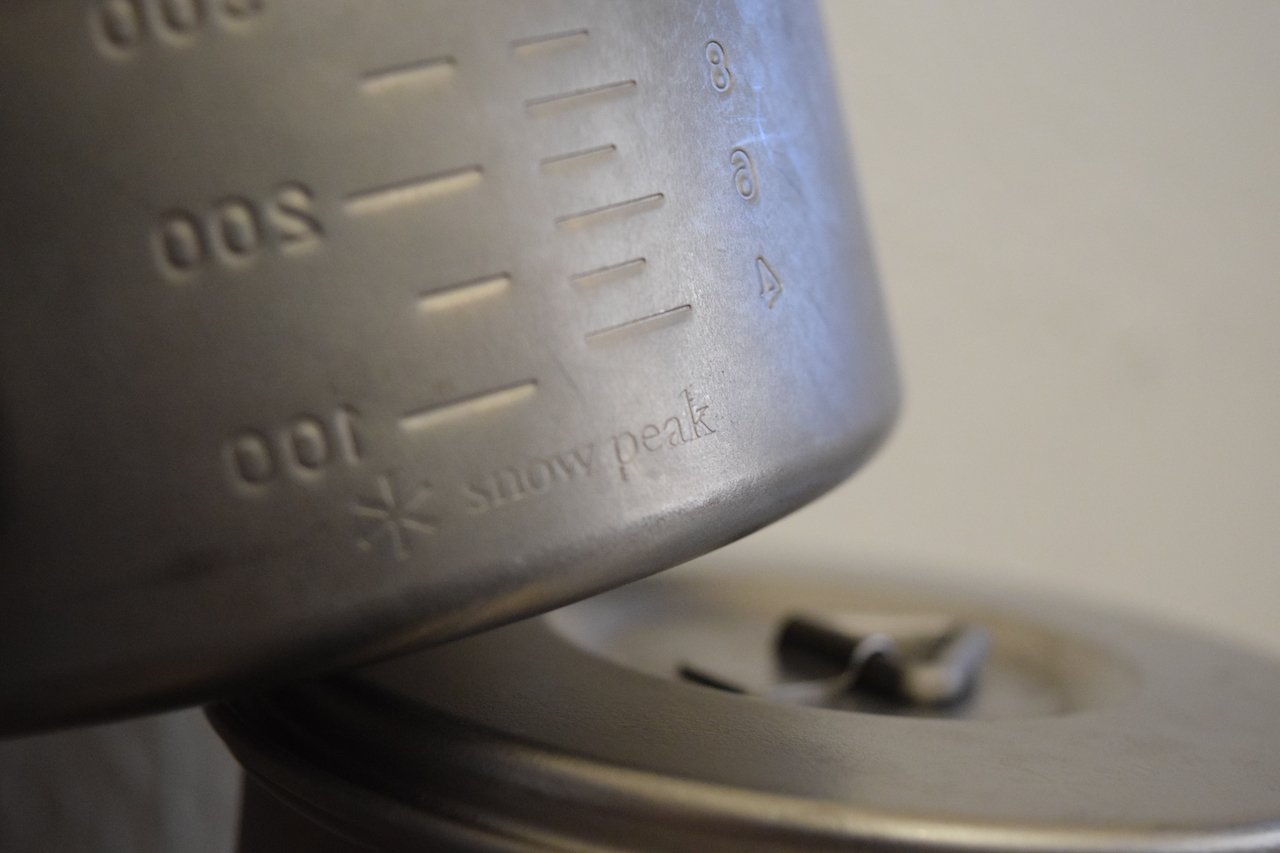Titanium Cookware Vs. Other Materials
When it comes to backpacking cookware material there are many options to choose from. The most popular are steel, aluminum, silicone, titanium and a combination of materials. My choice is titanium. Highlighted benefits of using titanium cookware are reduced weight, little to no corrosion, high strength and biological compatibility. Despite the benefits, titanium has downsides. For one it is comparatively expensive, thus turning many people away. Despite elevated prices, I justify the additional expense.

Intro Into Titanium
Titanium is interesting. It is a transition metal whose symbol is Ti. It’s atomic number is 22. Titanium’s melting point is ~3,000 degrees F, it’s density is 4.506 g/cm³ and it has an atomic mass of 47.867 u ± 0.001 u. The color is silver metallic in varying shades, mostly white. Ti is extremely resistant to many types of corrosion and biologically compatible with the human body. It was discovered in 1791 by William Gregor and named in 1975 by Martin Heinrich Klaporth. To make Titanium stronger, it is commonly alloyed with various types of elemental compounds. Ti has the highest strength to density ratio of all known metals.

Titanium VS. Aluminum
Aluminum is classified as a metal, Titanium is a transition metal. Al is the 3rd most abundant element in the Earth’s crust, Ti is about the 9th most abundant (meaning Al is much, much less costly). Aluminum is ~60% less dense compared to the same mass of Titanium. Al has been implicated as the culprit of health issues such as Dementia and Alzheimer’s, though no study has conclusively determined this. Out of pure skepticism, this is 100% the reason I don’t use Aluminum cookware. You can definitely get by with using stuff made of Aluminum and many do. Aluminum is widely available and commonly used for cooking in homes, restaurants and other establishments.

Titanium VS. Steel
Steel is an alloy, comprised of Iron and mainly differing levels of carbon. Compared to steel, titanium is nearly as strong yet 45% lighter of the same mass. Over time, steel has the chance of shattering when going through high and low temperature changes, whereas Titanium can withstand these changes much better. Steel has ferrous qualities, it is magnetic and corrodes. Steel is not an option for me as it corrodes, pure and simple. Certain types of stainless can be less prone to rusting but I’m not taking the chance. It is also invariably heavier than Ti. You will definitely pay much less for stainless than titanium, so that may be something you need to consider. I started with a MSR Stainless Steel Nesting Bowl, which was great in the beginning. Now I use only titanium cookware.

Titanium VS. Silicone
Silicone is a formidable adversary of titanium in the backpacking cookware arena. Sil offers benefits titanium by nature cannot. For one, there are silicone cookware designs which can collapse within themselves, reducing their packspace. Silicone pots can be exposed to fire and remain intact. In my view the major downsides with silicone are few but important. Sil designs sometimes incorporate plastics around rims or bottom edges for added strength but this is why I steer clear. I don’t do plastics in my backcountry kit and try to avoid them at home as well. With as little as we know right now about plastics and human biocompatibility, I’ll hedge my bets and avoid all together. Sil can also be just as expensive as titanium, dependent upon on where you source it from.

Snow Peak Titanium Cookware Lid
Bottomline, Titanium Is Incredible
For the above reason, I justify the steep cost of Titanium cookware. It is lighter, more durable, less corrosive and biocompatible with the human body. The other materials compared here are good, yet not as great as Ti. If you can pony up the funds, I highly suggest buying some and testing it for yourself. You will likely not regret the reduced weight and likely more safe gear. The brands I have gone with are Snow Peak, Vargo and Ill Gear. Most of my kit is from Snow Peak as they make superb products.


